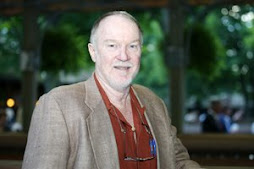Every year when Triple Crown season rolls around, complaints about the 1 1/2-mile distance of the Belmont Stakes (G1) resurface. Certain trainers in particular annually call for the distance to be shortened to 1 1/4 miles, and even go so far as to suggest shortening the Kentucky Derby (G1) to 1 1/8 miles so that the three Triple Crown races provide a steady progression of distances.
Fortunately that sentiment does not seem to have gained much traction, because, as software engineers are wont to say about perceived flaws in their products, the distance of the Belmont is a feature not a bug. Furthermore, in an all too insular industry that finally seems to be waking up to the negative way the rest of the world views our racing program, it is a feature that may well become a much stronger selling point in the future.
The Belmont is the oldest of the American classic races, inaugurated by Leonard Jerome in 1867, the year after the Wall Street speculator opened his eponymous racetrack in the north Bronx. Founder of the American Academy of Music and grandfather of Winston Churchill, Jerome designed the race as an American equivalent of the 1 1/2-mile Epsom Derby, and named it after banker August Belmont Sr., who financed construction of the track. Jerome Park's amenities were described as lavish, complete with an elegant ballroom and a clubhouse that rivaled the city's most luxurious hotels.
Jerome Park returned first-class horse racing to New York, following a hiatus during the Civil War. The Belmont was originally run at 1 5/8 miles, but fluctuated between 1 1/8 and 1 3/8 miles after it was moved to Morris Park in 1890 when Jerome Park was condemned by the city to facilitate the construction of the New Croton Aqueduct and Jerome Park Reservoir to provide water for the city.
The Belmont transferred to the new Belmont Park, built by August Belmont Sr.'s son August Belmont II, in 1904 and was run at 1 3/8 miles until 1926, when Samuel D. Riddle's Crusader, son of Belmont-bred Man o' War, became the first Belmont winner at the 1 1/2-mile distance that has since become sacrosanct.
In Crusader's era, there were scores of other prestigious American races at 1 1/2 miles and beyond, but as the emphasis in American racing shifted inexorably toward precocious speed after World War II, those races disappeared, were reduced in distance, or transformed into turf races one by one. Since the American Jockey Club, founded by August Belmont II and Leonard Jerome, among others, abandoned its historic principals in pursuit of perceived relevance for its namesake race, the Jockey Club Gold Cup (G1), and reduced its distance to 1 1/4 miles in 1990, the Belmont has stood alone as America's only 1 1/2-mile Grade 1 stakes on dirt.
That uniqueness makes the Belmont more valuable than ever to the American racing industry in the current global racing environment. As various supporters of the move to ban race-day medications have correctly pointed out, the rest of the world, particularly Europeans, see American racing as increasingly irrelevant, primarily because medications allow horses who otherwise might not be able to compete to win top-level races.
Distance is also a factor in those perceptions, however. The rest of the world still reveres horses that can beat the best at distances from the 1 1/2 miles of the Epsom Derby and most other Derby equivalents around the world to the two miles of Australia's greatest race, the Emirates Melbourne Cup (Aus-G1).
It is an exquisite bit of irony that an American-bred horse named Americain won the 2010 Melbourne Cup. His sire, Dynaformer, trained by one of the principal critics of the Belmont's distance, D. Wayne Lukas, won at 1 1/2 miles, and is one of only a very few American sires foreign buyers might expect to sire a major winner over that distance. Dynaformer's daughter, Blue Bunting, winner of the 2011 Qipco One Thousand Guineas (Eng-G1), is one of the favorites for the 1 1/2-mile Epsom Oaks (Eng-G1).
Dynaformer, though, is 26 years old. Who will succeed him as a potential sire of European Derby winners when he is gone? Why should Europeans come to America to buy potential Derby winners if we have no stallions capable of producing them?
So, the next time someone mocks the distance of the Belmont stakes or calls it a “marathon” (please!), tell them, no, it is a feature, not a bug.


"we have no stallions capable of producing them?"
ReplyDeleteJohn you amaze me. After writing a book called
foundation Mares.
John we have the mares capable. Are may be the english are ahead in the mating game.
ReplyDeleteEpsom Derby winner Pour Moi grand dam Victoress
As Bill suggested, the dam line of Pour Moi is an illustration of the way to breed classic stock (Darshaan, Conquistador Cielo, Northern Dancer, Le Levandou, etc), but it's hard to imagine Pour Moi being anything OTHER than classic.
ReplyDeleteBreeders and trainers and owners hereabouts regularly demand more. A colt or filly has to have speed, show form over 7, 8, 9 ... even 10 furlongs.
And without a wide cadre of owner-breeders to breed their stock for just those qualities, who will? The commercial producer (i.e., those without the cash to maintain a full-sized breeding and racing program) will get nothing if he takes a flock of yearlings to the sale with the look of the Theatricals, the Dynaformers, even the Leroidesanimauxses.
Most are too immature, angular, classic, 3yo types to get on an American trainer's short list. And the Euro buyers won't (with a handful of exceptions) buy off the physique but require a handful of prestige sires.
So we have come to this .....
Love the article. And love those features!
Frank